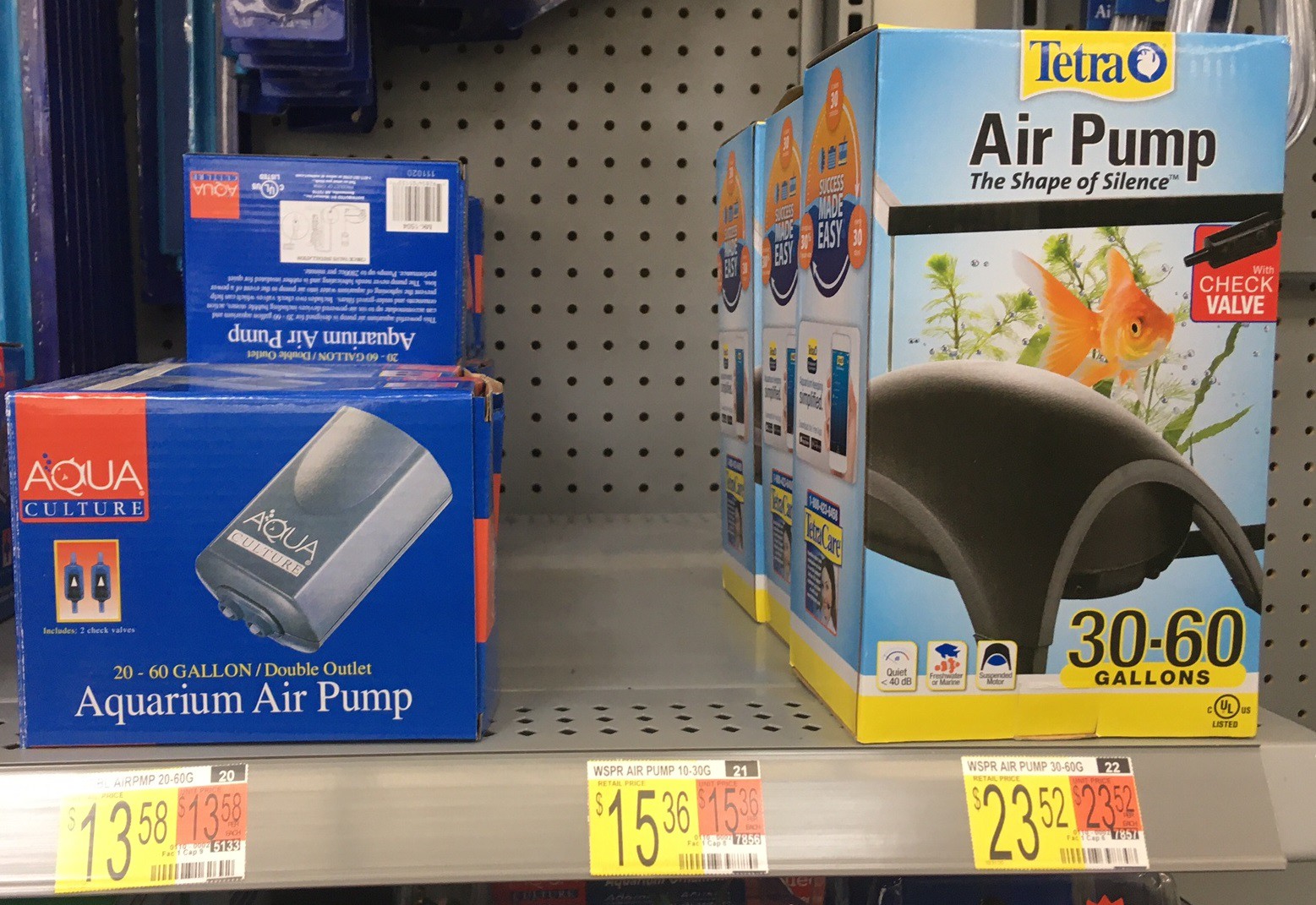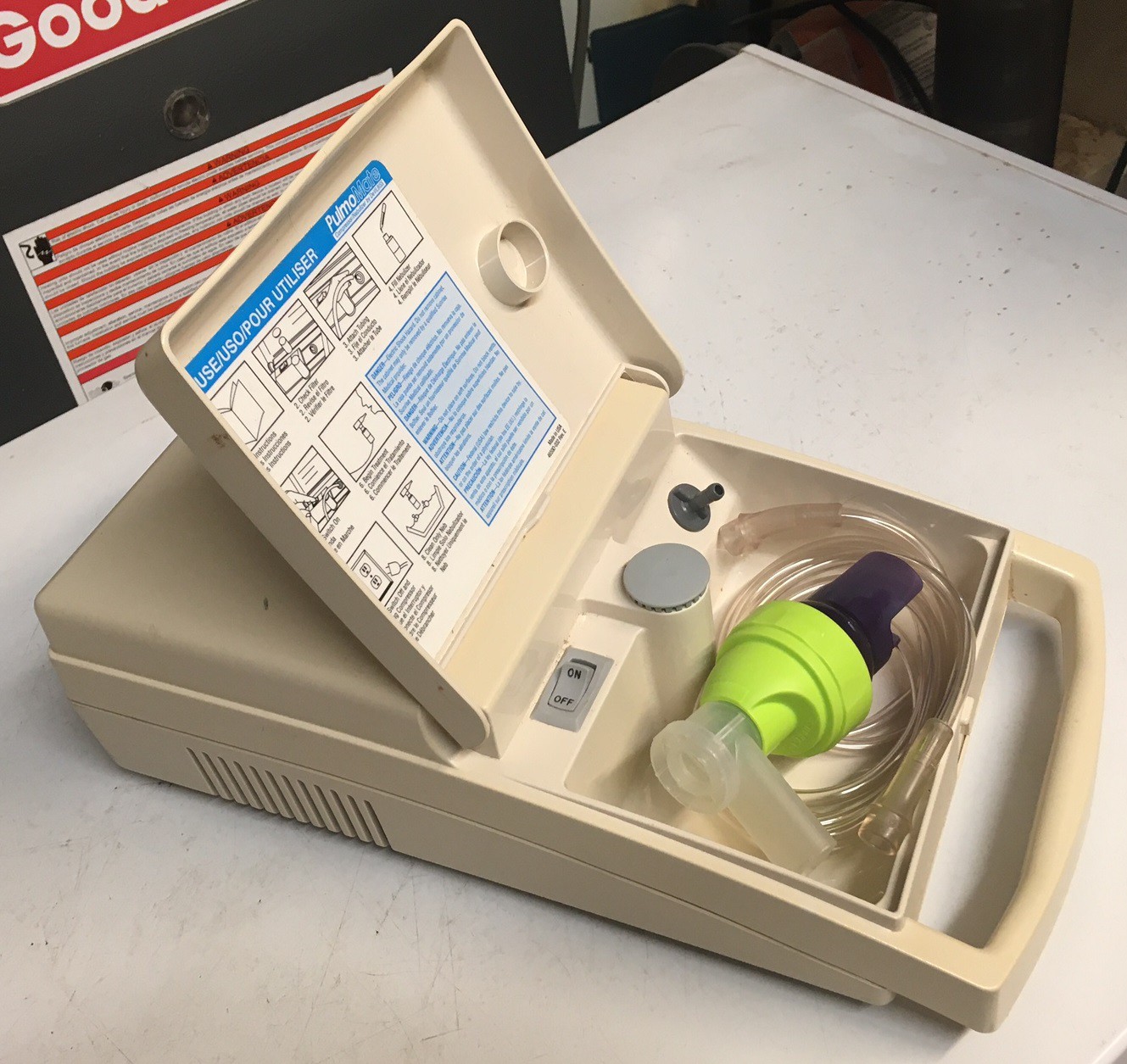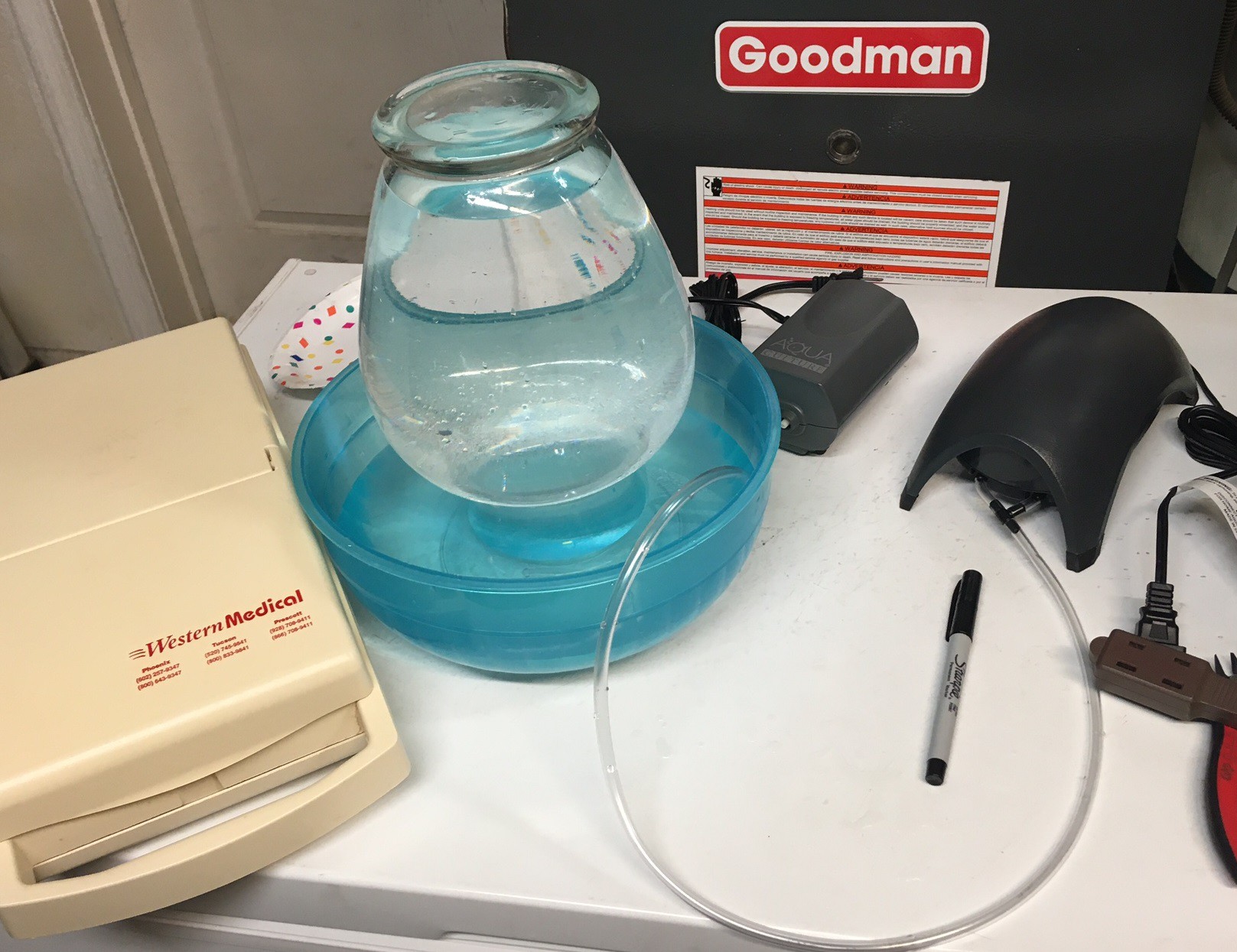I dropped by Walmart and picked up two aquarium air pumps to test out. The cheaper Aqua Culture 20-60 gallon pump says 3.5 watt on the bottom of the unit. And the more expensive Tetra 30-60 gallon pump says 4 watt on the bottom. That is probably a relatively accurate way to compare there potential output. I brought them home and plugged them in and was soundly disappointed! Neither blew any harder than a medium breath, they are quite anemic.

Each have two ports and it appears each port is plugged into the opposite side of the pump. If you plug up one port the other one struggles to produce any air. Fortunately you can combine both ports and actually get more air out of them, but not a lot more air. I tested it out with my 2mm test nozzle and my over the lens nozzle. With the test nozzle there was a soft breeze, with the over the lens nozzle I could not feel any air at all. At first glance both pumps appeared to make the same amount of air pressure.

I remembered we have a pump for a nebulizer hiding in a cupboard. We have had this for a very long time but it gets used every once in a while so I can't repurpose it for the laser. However I wanted to test it to see how it compares to the fish pumps. This is a Sunrise (DeVilbiss) model 46502 compressor/nebulizer. According to the specs it draws 140 watts and it can output 35 psi and produces 0.28 cfm flow when the line has no pressure. Testing it out it works much better than the fish pumps. The air is not as fast or voluminous as my main compressor but it has a strong flow with both nozzles in place. The flow is about what you would get blowing through a straw. It is fairly loud, especially when the lid rattles around, but it is quiet enough for a workshop, and miles ahead of the pancake compressor.

That got me thinking, how can we properly compare these pumps together. With the compressor we could measure how long it takes to build pressure in a tank, but these don't have a tank. It turns out we can invert a jar of water and bubble air into it to measure the air volume the pumps produce. If we also measure the time that this takes we can work out the CFM (cubic foot per minute) of the pumps. This measures the volume at zero pressure, the volume will be reduced as you continue to restrict the flow building pressure. It is an upper bound on the potential air flow.
We could test this under pressure by inverting the jar in a pool at a known depth. The pressure of the water above the jar will apply a known pressure on the air. However I don't have access to a pool...

Here is my test setup (I actually switched to a larger catch container later). I used the largest cylinder I could find (a vase), filled it with water and inverted it in a catch bowl. Then I marked the high water line and inserted my air tube into the inverted jar. I turned on the pump and measured the time to pump most of the water from the jar then marked the low line. Finally I filled the jar back up measuring the volume of water I added with a measuring cup. I tested all three pumps above along with my air compressor with the regulator set to 40 psi. The table below summarizes the results.
| pump | volume (ml) | time (s) | cfm | Percent |
| Aqua | 2250 ml | 34.4 s | 0.14 cfm | 10% |
| Tetra | 1800 ml | 20.7 s | 0.18 cfm | 12% |
| Sunrise | 2200 ml | 13.8 s | 0.34 cfm | 23% |
| Bostitch | 2050 ml | 3 s | 1.45 cfm | 100% |
The (Bostitch) compressor measurement is suspect. The air pressure was so high and the flow so fast that it emptied the container quicker than I could reliably measure. I would need to repeat the test with a much larger vessel to get anything close to an accurate measurement. It is safe to say the air flow is much stronger than the fish pumps. Interestingly enough the compressor is capable of producing over 3 cfm of air, but were only seeing half that. I was running this through 50 feet of 1/4" tubing and running it through a ball valve, that may account for some of the loss in flow as well.
The data is interesting, but it does not paint the full picture. Because we are not measuring the flow under pressure the aquarium pumps are coming out better looking than they really are. I found that any restriction on the air tube with the aquarium pump severely restricted there flow. Probably a good backup test would be to measure the max pressure each pump can produce. I don't have a gauge accurate enough to do this, but I suspect the aquarium pumps can only produce a few psi at best.
Anyway any pump that can produce at least 0.34 cfm and at least 5 psi is bound to work. However that is probably the bottom of the range, I'm sure double those values would be much better.
The large capacity metal aquarium compressors on Amazon claim to have plenty of cfm (0.7-3.9 cfm for $30-$100), however they are all very low on the pressure side (2.3-5.1 psi). I'm not sure if that is enough pressure to handle the restrictions in the line and nozzle. Anyway I may break down and pick one up, now that we have some tools to better compare them.
 David Tucker
David Tucker
Discussions
Become a Hackaday.io Member
Create an account to leave a comment. Already have an account? Log In.